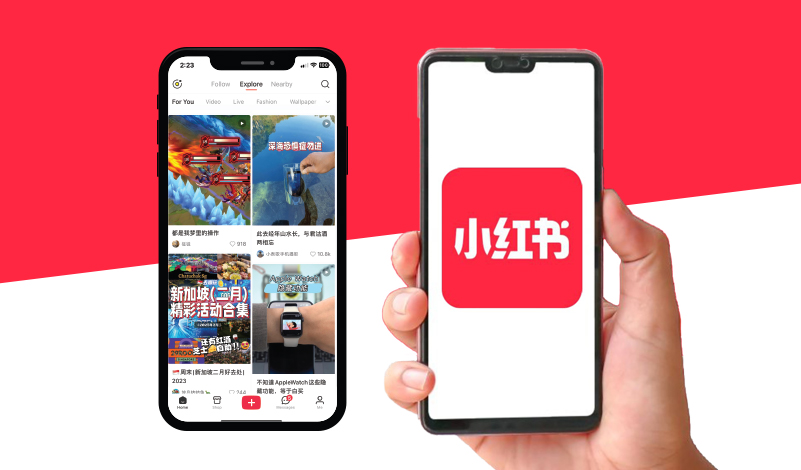China’s Social Media Landscape in 2025: A Must-Win Battlefield for Global Businesses
China’s social media platforms are dynamic and rapidly evolving, presenting immense opportunities for international companies. Understanding the unique ecosystem of each platform is crucial for success in this highly competitive market.

Key Platforms and Their Strategic Value
Here’s a breakdown of China’s major self-media platforms and why they’re essential for reaching specific audiences:
A, WeChat Channels: The Super-App Ecosystem
WeChat Channels have become a self-contained ecosystem, offering a comprehensive closed-loop experience. By the end of 2024, WeChat Channels boasted over 900 million monthly active users. Notably, users aged 50 and above account for 22.8% of the total, while those in first-tier cities make up 33.1%. The “Search” function seamlessly integrates mini-programs, live streams, and e-commerce portals, driving a 120% year-on-year increase in merchant GMV. Brands can effectively reach B2B decision-makers through content like “30-second factory tours + expert interviews.”
B, Douyin (TikTok): The Decentralized, Precision Traffic Pool
Douyin’s user base has reached an astounding 1.071 billion. Its e-commerce GMV has seen a 35% year-on-year increase, with in-store live streams accounting for over 30% of sales. The platform’s algorithm optimizes to support small and medium-sized businesses; for example, one snack brand achieved over 50,000 sales in seven days through a “KOS matrix + vertical short drama” strategy. International brands should focus on “skill-based tutorials + situational product placement” content to appeal to users under 24.
C, Xiaohongshu (Little Red Book): The Trust Economy of Peer Recommendations
Xiaohongshu is dominated by female users, who make up 65% of its demographic, and saw an 8.1-fold year-on-year surge in new merchant registrations. While the platform strictly prohibits external traffic redirection, it now allows direct product links in comments. One domestic earphone brand leveraged “pain point reviews + amateur buyer recommendations” to break into the top 3 in its category within six months.
D, Bilibili (B站): The Gen Z Tech Consumption Trendsetter
A significant 41.9% of Bilibili’s users are under 24, with an average daily usage time of 99 minutes. Brands like Xiaomi and Nio have successfully boosted new product launch conversion rates by 47% through “product teardowns + bullet comment interactions.”
E, Kuaishou: Trust-Based Virality in Lower-Tier Markets
Kuaishou’s short-form dramas attract 270 million daily active users, and its local life GMV has grown twentyfold. The international beauty brand Swisse utilized AI-generated anti-aging video guides, combined with “dialect-speaking streamers + family-style live streams,” to boost repurchase rates by 28% in third-tier cities.
Winning Strategies for Self-Media Marketing in China (2025), A Data-Driven Guide
To truly succeed in China’s self-media landscape, international businesses need to adopt sophisticated and localized strategies.
Here are key strategies to consider for your 2025 marketing efforts in China:
1, KOS Marketing: From Opinion Leaders to Sales Conversion
While 74% of advertisers prioritize KOL (Key Opinion Leader) content for social media投放, a more conversion-focused approach using KOS (Key Opinion Sales) is emerging. A prime example is a luxury brand that trained its in-store employees to create professional accounts, focusing on “product craftsmanship analysis + styling tutorials.” This strategy led to a 60% reduction in lead costs and a 34% increase in in-store conversion rates.
2, Refined Operations for Brand Self-Broadcasting
In 2025, 47% of businesses are increasing their investment in brand live streaming. The automotive industry, for instance, has improved lead collection efficiency by 2.1 times through “engineer Q&A sessions + production line live streams.” L’Oréal, a beauty giant, implemented a “7×18 hour rotational live streaming mechanism” combined with AI-generated real-time promotional language, resulting in single-session GMV exceeding 80 million RMB.
3, AI-Powered “Human-Machine Collaboration” in Content Creation
A significant 54% of advertisers are now using AI tools weekly, with applications like DeepSeek achieving a 20% penetration rate. One home appliance brand utilized AI to generate 500 short video scripts in bulk. After manual refinement and optimization, their hit rate for viral content increased by 43%, while content production costs decreased by 78%.
4, Reshaping Traffic Through Social Media Search
Eighty-seven percent of businesses are increasing investment in in-platform search advertising, with Xiaohongshu’s “life encyclopedia” search volume surging by 206% year-on-year. Experts recommend deploying a combination of “industry keywords + situational long-tail keywords” on Douyin, such as “cross-border payment solutions for SMEs.”
5, Localized Content for Emotional Resonance
Kuaishou penetrates county-level markets through “dialect short dramas + regionalized products.” One domestic apparel brand integrated local cultural IPs, achieving over 100 million RMB in monthly sales in Southwest China. International brands should note that users in first-tier cities are more interested in “technological innovation,” while those in lower-tier markets prioritize “cost-effectiveness and practical proof.”
What aspects of China’s social media landscape are most relevant to your business goals?
